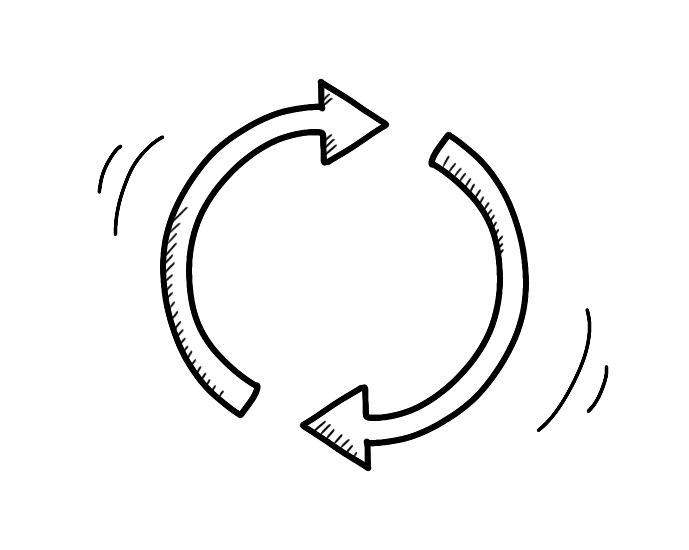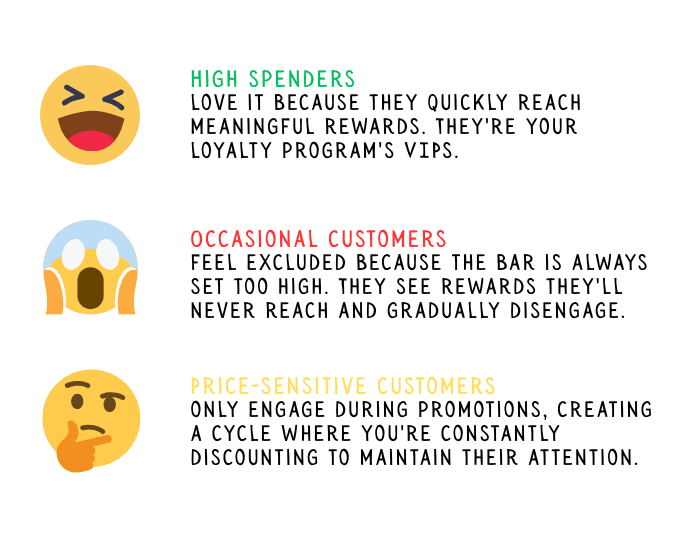Loyalty Blueprint Step 3. Propose meaningful value exchange
AN

Points aren't the problem. Thinking they're the whole program is. Here's how to build loyalty around real value.
Before you put a cherry on top, make sure you have a lovely cake underneath.
Most brands begin (and end) with rewards mechanics: spend money, earn points, and receive discounts. It's the cherry on top of the loyalty cake.
But here's what I've learned after years in this industry: before you put a cherry on top, make sure you have a lovely cake underneath.
The problem isn't that points are bad. It's that too many brands think points are the cake. They're not. They're just the final flourish on something much more substantial: genuine value that makes customers' lives better.
The Transaction Trap
When loyalty programs focus purely on "spend more, get more," they create what I call the transaction trap:

The result? A "one size fits all" approach that actually fits very few customers well. You end up with a small group of heavy users and a large group of people who joined but rarely engage.
The Real Currency: Data and Trust
Here's the fundamental shift every loyalty leader needs to understand: When customers join your program, they're signing a contract with you where data is the currency.
They give you information about who they are, what they like, when they shop, and how they behave. In return, they expect clear, personal value back from you.
When customers join your program, they're signing a contract with you where data is the currency.
This isn't just about demographics and purchase history. Customers today understand the value of their data. They know that their information helps you:
- Predict what they might want next
- Personalize their experience
- Improve your products and services
- Target them with relevant offers
The question is: Are you giving them fair value in return?
Beyond the Discount Addiction
"But our customers are different; they really love discounts and special offers!"
I've heard this in every country I've worked in. And yes, customers do like good deals. Price sensitivity varies; people generally enjoy saving money.
But the point is that discounts open wallets, not hearts.
Discounts work great for acquisition. They get people to sign up. But in the long run, they only work for a narrow group of customers. Worse, transactional relationships are always superficial because there's always someone who can offer a similar product at a lower price.
When your primary value proposition is price, all your investment in margin evaporates the moment customers find a better deal elsewhere.
What Meaningful Value Actually Looks Like
Real value exchange goes far beyond discounts. Consider what different customer segments actually value:
Busy Parents might value:
- Digital receipts that automatically organize expenses
- Priority customer service with shorter wait times
- Extended return periods for busy schedules
Tech Enthusiasts might value:
- Early access to new products
- Behind-the-scenes content about product development
- Community access to other enthusiasts
Budget-conscious shoppers might value:
- Price match guarantees
- Exclusive access to clearance items
- Payment flexibility options
Occasional Customers might value:
- Simple, immediate benefits that don't require accumulation
- Helpful content related to their interests
- Recognition for any engagement, not just spending
The beauty of many of these benefits? They cost you very little to provide but create genuine value for customers.
The Two-Objective Test
When designing your value proposition, every benefit should pass this two-objective test:
1. Sales Growth: Will this encourage members to spend more with us?
2. Engagement Growth: Will this motivate members to interact more, giving us better data and insights?
The best benefits accomplish both simultaneously. For example:
- Product reviews and ratings encourage engagement while influencing purchase decisions
- Personalized recommendations use customer data to drive sales while showing you understand their preferences
- Exclusive events create community engagement while showcasing new products
Real-World Value Innovation
Here are examples of brands that have moved beyond points and discounts:
A major retailer introduced "instant expertise". Members get immediate access to product specialists via chat, creating value for uncertain buyers while increasing conversion rates.
A beauty brand offers "virtual try-on" technology exclusively to members, solving the problem of buying cosmetics online while driving digital engagement, leading to an increase in online conversion rates.
A grocery chain provides "smart shopping lists" that learn from purchase history and suggest meal planning, making weekly shopping easier while increasing basket size.
Notice none of these primarily involve discounts, yet all create genuine value while driving business results.
Building Your Value Mix
Your loyalty program should offer a portfolio of value types:
- Immediate Value (available from day one), e.g.:
- Digital receipts and expense tracking
- Priority customer service access
- Welcome gifts or exclusive content
- Progressive Value (grows with engagement), e.g.:
- Personalized recommendations that improve over time
- Access to higher service tiers
- Influence over product development
- Experiential Value (creates emotional connection), e.g.:
- Exclusive events and experiences
- Community access and social features
- Behind-the-scenes brand access
- Functional Value (solves real problems), e.g.:
- Extended warranties and return periods
- Price protection and match guarantees
- Convenience features like saved preferences
The Sky's the Limit (But Start with Customer Problems)
The possibilities for meaningful value exchange are endless, limited only by your imagination and understanding of customer needs. But while creativity matters, the best programs start with a simple question:
"What problems do our customers face that we're uniquely positioned to solve?"
Sometimes it's a feature. Sometimes it's service. Sometimes it's access or information. Always, it solves a real problem.
Your Role as Value Architect
As a loyalty leader, you're not just managing a points program. You're architecting an ongoing value exchange between your brand and your customers. This means:
- Understanding different customer segments and what they uniquely value
- Balancing immediate and long-term benefits to engage both new and veteran members
- Measuring both spending and engagement to ensure your program drives sustainable growth
- Continuously testing and evolving your value proposition based on customer feedback and behavior
Moving Forward: From Cherry to Cake
Remember: points and discounts can be the cherry on top, but they shouldn't be the whole dessert. The real opportunity lies in creating a meaningful exchange where customers feel valued, understood, and genuinely better off for being part of your brand community.
When you get this right, your loyalty program becomes both a growth engine and a relationship generator, driving sales while deepening connections that last far beyond any single transaction.
Ready to move beyond discounts and build a genuine value exchange? The best loyalty programs solve real customer problems while driving business growth. Let's design a value proposition that turns transactions into relationships.